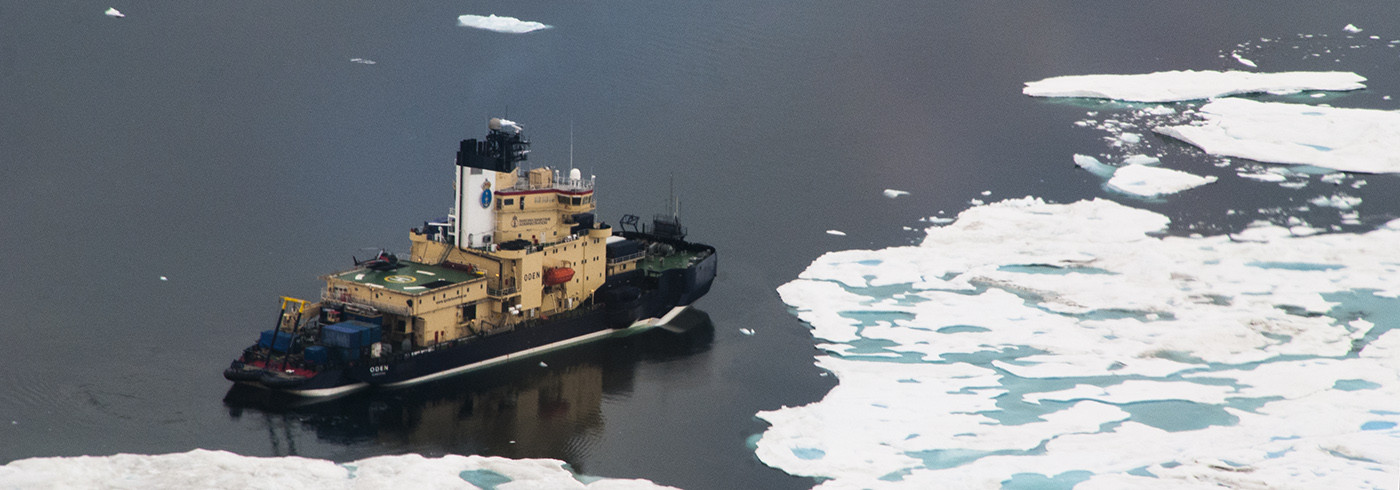Could marine microorganisms in the clouds slow down the melting of Arctic ice?
31 July 2018 - 25 September 2018
The research during expedition Arctic Ocean 2018. Illustration: Paul Zieger
Every year we hear alarming news about the disappearing ice in the Arctic Ocean. The climate in the Arctic is changing faster than anywhere else on earth, with serious consequences for Arctic plants, animals and people living there. Clouds play a central role in the Arctic climate by regulating the energy flow at the sea surface, which affects the freezing and melting of the ice.
Previous research has surprisingly found sugar molecules produced by microorganisms at the water surface in the clouds over the North Pole. While it is both exciting and unexpected that the microorganisms in the open leads inside the pack ice can generate sugar molecules that affect cloud formation in the High Arctic, our current understanding is not sufficient to quantitatively appreciate their significance for future sea ice coverage. Perhaps more open water means more sugar molecules and more clouds that reflect incoming solar radiation and thus reduced heating of the surface. This feed-back mechanism could possibly slow down the melting of the ice.

Inflating the balloon for collection of cloud droplets for post cruise determination of sugar molecules, proteins and information encoded in the DNA sequence of the marine microorganisms. Photo: Julika Zinke
Pioneering achievements require a broad and interdisciplinary effort, and rely on technical equipment and analytical methods. Our detailed observations were conducted from a few hundred meters below sea level to several kilometres into the atmosphere. By anchoring a balloon on our ice sheet at the North Pole we collected droplets from the clouds to determine the origin of the particles by analysing the hereditary information encoded in the DNA sequence of the marine microorganisms. We have gathered unique observations that will provide detailed information about basic processes for cloud formation in the Arctic.

The balloon hunting for clouds. Photo: Ian Brooks
In a few years we will be able to report quality-controlled data. Good things come to those who wait, our unique results are necessary to understand the Arctic climate, its sensitivity and response to climate change caused by human activities. This was the fifth research expedition focusing on cloud formation in the central Arctic basin. The previous were carried out in 1991, 1996, 2001 and 2008. Through repeated expeditions to the same area, with the same objective, we can obtain both a follow-up of changes and variability in the Arctic as well as a continuous knowledge building on climate processes are obtained.

Sampling of the upper most surface layer of the ocean called the surface microlayer, SML, in the open lead. The surface microlayer is the top 1 millimeter of the ocean surface. It is in this layer where all exchange occurs between the atmosphere and the ocean organic compounds such as amino acids, sugars and fatty acids are highly enriched in the SML. Photo: Karin Alfredsson

The surface of the open sea between ice floes was in constant change. During days with a lot of open water a larger boat with better capacity for sampling was used. Photo: Karin Alfredsson

Observations of possible particles emissions, including the sugar molecules, from the open lead. The observations were performed with Eddy-covariance particle flux technique. Photo: Karin Alfredsson
Caroline Leck
Stockholm University

